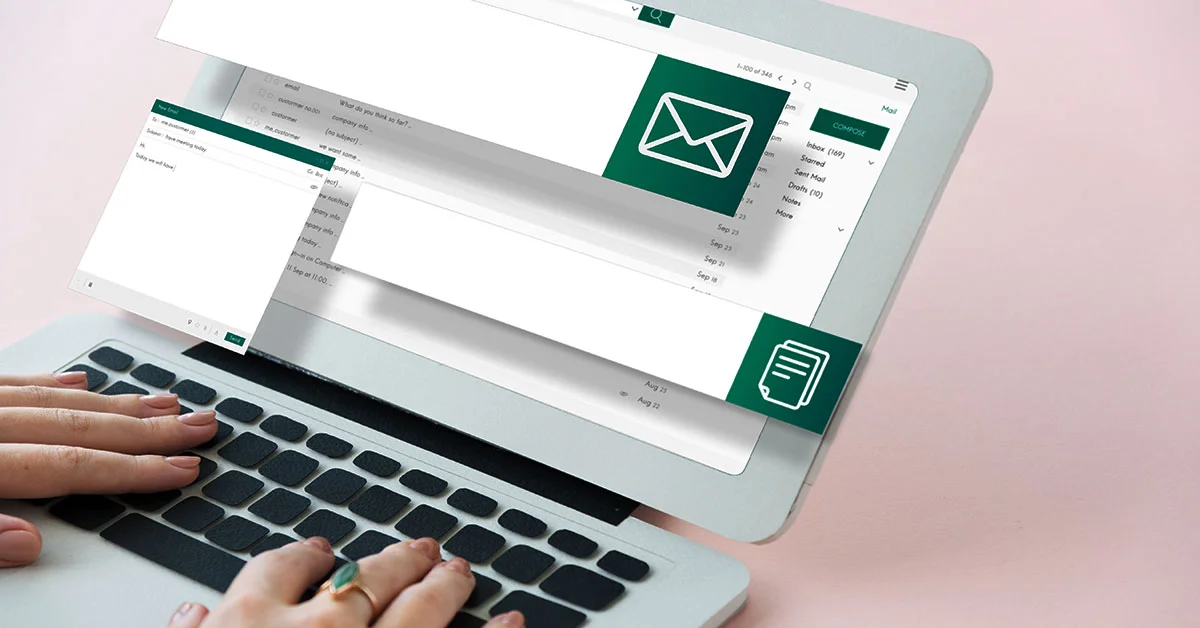Table of Contents
Email is similar to a mirror in that it reflects the sender’s personality and mental health. The protocol of Email for customer service can show what your company stands for and how well you serve your clients.
For many years, email has been a popular method of contact for customer service. Like any communication tool, though, it’s important to understand when and how to use it.
Even the unhappy consumers can be satisfied with a well-written email from customer service. Effective, sympathetic, and efficient email communication can greatly impact client loyalty and satisfaction. Just as it does in business phone customer service. Understanding proper email etiquette involves more than just adhering to guidelines it consists of making sure each client feels valued, heard, and respected. We’ll look into the specifics of customer service email etiquette in this guide, explaining why it’s important and how to do it well.
What is Customer Service Email Etiquette?
Email etiquette for customer service includes guidelines for writing and replying to customer emails. It involves more than just writing fundamentals; it also consists of the timing, tone, and degree of customization you use in your email correspondence. Regardless of the circumstance, proper etiquette guarantees that your communications are understandable and professional and send the appropriate message to the client.
It’s a combination of science and art that blends knowledge of client needs with potent communication techniques. This etiquette extends to all interactions, from answering emails to resolving complicated problems. It is essential to ensure that every email sent not only determines the customer’s immediate issue but also enhances their opinion of the brand and their relationship with it specifically.
Why is Proper Email Etiquette Important?
Maintaining a professional image and building good customer relationships require proper email etiquette in customer service. In more detail, let’s analyze why following adequate email etiquette is so important.
Initial Impression Counts
A customer and a company establish their relationship through their first email exchange. Similar to how they handle business phone customer service. A carefully considered and well-written message can dramatically alter a customer’s opinion and encourage more interaction.
This initial meeting provides a chance to showcase your brand’s dedication to quality and client happiness. You may communicate to customers that your business values their business and is ready to help them by paying attention to tone, clarity, and responsiveness.
Builds Trust and Loyalty
Trust is the foundation of any relationship, which also applies to customer relationships. Whether email, business phone features, or other means facilitate them. When customers receive polite, helpful, and responsive communication, they feel that their issues are taken seriously and valued.
Customers are more likely to stick with brands that consistently demonstrate their concern when they are dependable. This dedication can eventually pay off through recommendations, repeat business, and a solid reputation in the industry.
Avoids Miscommunication
It’s necessary to communicate clearly and straightforwardly to avoid misunderstandings that can cause discontent or, worse, the loss of business. To minimize the possibility of misunderstanding, proper email etiquette calls for precision in both language and intent.
Businesses can reduce the possibility of problems resulting from misunderstandings by making sure messages are clear and well-structured. This will facilitate the resolution process and preserve a good customer experience.
Reflects Your Brand
Corresponding to business phone customer service, your company’s identity, values, and professionalism are reflected in every email it sends. Positive, regular email exchanges contribute to your customer’s perception of your brand is more firmly established.
Maintaining this consistency is essential to creating a powerful, identifiable brand with which clients are at ease doing business. Furthermore, it is more necessary than ever to ensure that every email represents your brand to the fullest extent possible when social media and online reviews can have a big impact on a company’s reputation.
Must Follow These Rules of Customer Service Email Etiquette
Following the fundamental guidelines is essential for effective customer service email etiquette. Using previous interactions and addressing customers by name in emails helps build rapport. Effective communication is ensured by briefness and clarity, and a cheerful tone promotes goodwill. Errors are avoided by proofreading, and prompt replies show dedication.
Ensuring customer satisfaction requires prioritizing privacy and providing solutions over justifications. Together, these guidelines create excellent email communication that improves customer satisfaction and builds brand equity. To ensure excellence in email communication, here are some must-follow rules.
Personalize Your Emails
Using your customer’s name and bringing up past exchanges shows that you respect them as unique. It builds rapport and demonstrates your awareness of their individual needs. Recognizing previous exchanges also helps to keep the conversation on track and gives the customer a sense of understanding and appreciation.
Be clear and concise
Effective email communication requires both of these qualities. Clear of using excessively complicated or technical language that could confuse the customer. Instead, make an effort to communicate your point clearly and understandably.
Express the goal of your email clearly, and include any required instructions or information. You can guarantee that your message is quickly received and understood by being succinct and direct, which will help resolve the customer’s problem more amicably.
Use a Positive Tone
Keeping your emails upbeat and supportive is essential to developing rapport and trust with clients. Have compassion and understanding in all situations, even when breaking bad news or handling a grievance.
Instead of focusing on the wrong parts of the situation, concentrate on coming up with solutions and providing support. By keeping a positive outlook, you can show the customer that you are dedicated to giving them exceptional service and ease any stress or frustration they may be feeling.
Proofread Your Emails
Grammar and spelling mistakes can weaken the credibility of your message and take away from the professionalism of your emails. Before sending, take the time to carefully proofread your emails to make sure there are no typos or grammatical errors.
To ensure accuracy, double-check any factual information or details. You can give your clients confidence by communicating with precision and skill, as this will demonstrate your attention to detail and competence.
Respond Promptly
Being prompt is essential when it comes to customer service, whether through email or business phone customer service. Answering customer questions immediately shows that you are dedicated to providing timely support. When a customer emails you, try to respond as soon as possible, even if it’s just to let them know that you received their message and give them an estimated time frame for resolving it.
Quick responses assist in preventing customers’ frustration or dissatisfaction from growing by reassuring them that their concerns are being taken seriously. Maintaining responsive and open lines of communication can also result in quicker issue resolution, improving the client experience in general.
Maintain Privacy and Security
In email correspondence, protecting sensitive data and honoring customer privacy is critical. Always abide by company policies and data protection regulations when handling customer information.
Unless absolutely necessary, avoid sharing confidential or personally identifiable information in emails, and ensure you have the proper authorization before sharing any such information.
Prioritizing security and privacy in your communications will help you gain customers’ trust and shield their private information from exposure or illegal access.
Offer Solutions, Not Excuses
When addressing customer inquiries or complaints, focus on finding solutions and resolving issues rather than making excuses or shifting blame. Take ownership of the problem and work collaboratively with the customer to identify and implement a satisfactory resolution.
Be proactive in providing alternatives or additional assistance to ensure the customer’s needs are met and their concerns are addressed effectively. Demonstrating a commitment to problem-solving and customer satisfaction can turn potentially harmful situations into positive experiences that strengthen customer loyalty and trust.
Email Etiquette: Overcoming Communication Barriers
Even though email communication is effective, it doesn’t have the same nonverbal cues as phone or in-person interactions. If this absence is handled appropriately, it may result in better communication. Here are a few methods to get past these obstacles.
- Although signs can be helpful in expressing tone, professional communications may not always be the best place for them. Use them sparingly.
- The tone of your message can be confused if vocal inflexion is not present. Avoid using all caps, which could be interpreted as shouting, and instead aim for a neutral to upbeat tone.
- To avoid confusion, spell out any points that could be taken in multiple ways and summarize the key ideas after your email.
- Invite clients to contact you with any clarifications or questions they may have if your email is unclear. Keeping the lines of communication open can help avoid problems later on.
Conclusion
In conclusion, developing good email etiquette for customer service involves more than just following the rules; it also entails creating a professional, understanding, and committed mindset towards satisfying your clients’ needs.
You can improve the customer experience and develop long-lasting connections based on satisfaction and trust by altering your communication, being clear and concise, keeping a positive mindset, and providing prompt and efficient solutions. In today’s competitive business climate, consistently improving your email communication abilities and aiming for excellence will benefit your clients build your brand’s reputation and help you succeed in the long run.







